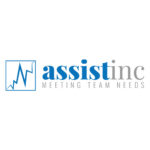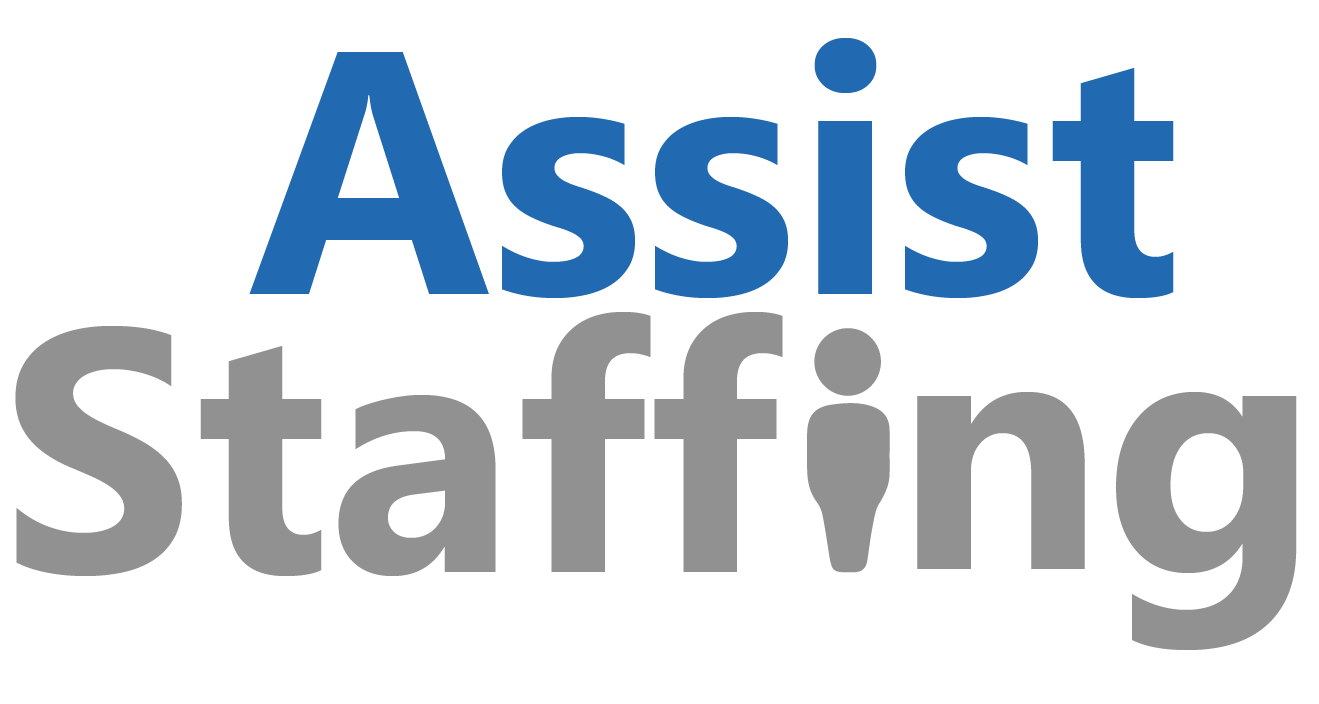
Career Plaza
Overview
-
Sectors Chicago, IL
-
Posted Jobs 0
-
Viewed 21
Company Description
Recruitment Advertising: everything you Need To Know
Recruitment marketing is a crucial element of contemporary hiring techniques, designed to attract leading talent by promoting task chances through numerous channels. Unlike traditional job postings, which simply list openings, recruitment advertising integrates targeted messaging, company branding, and sophisticated technology to reach the best candidates at the correct time.

In today’s competitive task market, standing out as a company is more vital than ever. Companies are turning to recruitment advertising to create individualized, appealing advertisements that show their brand and draw in candidates who line up with their culture and values. By leveraging modern tools like social media, programmatic advertising, and data analytics, recruitment marketing has ended up being a powerful way to fill positions more efficiently while improving the candidate experience.

What Is Recruitment Advertising?
Definition and Differences
Recruitment marketing refers to the tactical promotion of job opportunities through different advertising platforms to draw in competent candidates. Unlike conventional job posts, which are fixed and frequently passive, recruitment advertisements actively target potential candidates throughout multiple channels, consisting of job boards, social networks, and even programmatic advertising networks. The goal is to not just showcase employment opportunities however also to highlight the company’s employer brand and attract people who may not be actively job searching.
The essential difference in between recruitment advertising and conventional task posts depends on the approach. While task posts are generally put on specific job boards where prospects search, recruitment marketing connects to targeted audiences throughout the web, social platforms, and more, motivating them to engage with the task opening even if they aren’t actively searching for brand-new functions.
Purpose of Recruitment Advertising
The main role of recruitment advertising is to attract and engage qualified candidates by promoting both particular task opportunities and the general company brand name. A well-executed recruitment ad highlights not simply the task, employment but the business’s culture, worths, and growth chances, which are typically major decision-making aspects for prospects. This form of advertising also enables companies to strategically target various prospect demographics based upon experience, place, or industry, making sure that the job ad reaches the most relevant audience.
In a congested job market, recruitment marketing is important for standing apart from the competitors, making it a key tool for services wanting to hire top talent efficiently and successfully.
The Evolution of Recruitment Advertising
Recruitment marketing has actually undergone significant modifications over the previous few years, developing together with improvements in innovation and shifts in how people try to find jobs. Here’s a brief timeline of its evolution:

The Early Days: Print Media
In the early days of recruitment advertising, business mainly relied on print media-newspapers, publications, and trade publications-to promote job openings. These ads were limited by geographic reach and flow, suggesting that job chances were mainly seen by local prospects or those currently interested in the specific publication. This method worked in its time, but it lacked the capability to target specific ability or demographics.
The Rise of Job Boards: The Late 1990s and Early 2000s
The introduction of job boards like Monster, Indeed, and Glassdoor in the late 1990s marked a major shift in recruitment marketing. These platforms permitted companies to post task openings online, significantly broadening their reach beyond regional candidates. Job boards ended up being the go-to resource for active job applicants, and companies were able to receive applications from a much bigger pool of candidates. However, the technique stayed fairly passive, as ads still depended upon candidates actively looking for tasks.
The Digital Transformation: Social Network and Programmatic Advertising
The real improvement in recruitment marketing came with the rise of social media platforms like LinkedIn, Facebook, and Instagram, in addition to the advancement of programmatic advertising in the 2010s. Social network permitted business to target specific demographics and interests, reaching passive prospects who weren’t actively job searching however might be convinced by an attractive opportunity.
Programmatic advertising further reinvented the field by automating the advertisement placement process, utilizing algorithms and information to place advertisements across numerous platforms, enhancing for reach and importance. This data-driven method made it simpler to customize job ads to specific candidate profiles, guaranteeing the best audience saw the chance at the correct time.
The Current Landscape: Data-Driven and Mobile-First
Today, recruitment marketing is highly data-driven, leveraging analytics and AI to continually enhance advertisement targeting and efficiency. With the widespread usage of smart devices, mobile optimization has actually become vital, enabling candidates to view and get jobs directly from their devices. The ability to track metrics like click-through rates, conversion rates, and cost-per-click has actually offered companies extraordinary insights into the efficiency of their recruitment efforts, making recruitment advertising a vital part of contemporary hiring strategies.

In summary, recruitment marketing has progressed from fundamental print advertisements to sophisticated digital projects that take advantage of advanced innovation to draw in the very best candidates in a progressively competitive job market.
Kinds Of Recruitment Advertising
Recruitment advertising provides a range of platforms and strategies to connect employers with qualified prospects. Understanding the different kinds of recruitment marketing permits companies to pick the most reliable approaches for reaching their target audience. Below are some of the most popular choices for recruitment advertising.
Job boards like Indeed, Glassdoor, and LinkedIn are some of the most commonly utilized platforms for recruitment marketing. These sites permit companies to publish job openings where active job seekers are most likely to discover them.
– Job boards are typically the first stop for prospects actively browsing for job chances.
– Some job boards enable for advanced targeting, including filters for task area, industry, and experience level.
– Many job boards provide pay-per-post or subscription designs, making it an inexpensive alternative for smaller business.
Drawbacks:
– Popular task boards are crowded with listings, which can make it tough for a single post to stand apart.
– Job boards generally draw in active job seekers, restricting your access to passive prospects who might not be actively looking but are still open up to brand-new opportunities.
Social Network Ads
Platforms like Facebook, Instagram, and LinkedIn use extremely targeted social media advertising options for recruitment. Social network ads are designed to reach prospects based upon their interests, job titles, education, and even behavioral information.
– Social network advertisements enable companies to target specific demographics, interests, and even geographical locations, making it simpler to reach the most appropriate prospects.
– Social media advertisements tend to be more appealing, with functions like visuals, videos, and even instant application buttons.
– Unlike job boards, social networks advertisements can catch the attention of passive prospects who might not be actively job browsing but might be captivated by the ideal opportunity.
Programmatic Advertising
Programmatic advertising is a highly automated method of putting job advertisements across numerous platforms. By utilizing AI and data-driven algorithms, programmatic ads are immediately placed where they are probably to be seen by pertinent candidates, enhancing reach and performance.
Advantages:
– Programmatic advertising conserves time by automating the ad positioning procedure across a range of channels.
– The automatic nature of programmatic advertisements guarantees that your budget is designated effectively, delivering advertisements to the right audience at the best time.
– Real-time data is used to continually improve the targeting and performance of your ads.
Pay-Per-Click (PPC) Ads
PPC recruitment ads charge companies for each click an ad gets. These ads can be put on job boards, online search engine, or social networks platforms and are an affordable way to guarantee that you just pay when somebody engages with your job listing.
How It Works:
– Like other digital marketing techniques, PPC advertisements allow you to target specific demographics or job applicants by their job title, location, or experience level.
– You pay just when somebody clicks on your ad, which can lead to a high roi (ROI) when targeted properly.
Traditional Media
While digital platforms dominate recruitment marketing today, standard media-such as print, radio, and billboards-still contribute in certain industries and geographic locations. These approaches can be reliable when targeting local prospects or reaching audiences who might not use online task search platforms often.
Benefits:
– Traditional media can be specifically beneficial for local or niche markets where particular abilities remain in need.
– In some industries, less rivals utilize standard media, which enables your recruitment ad to stand out more quickly.
The Importance of Employer Branding in Recruitment Advertising
Defining Employer Branding
Employer branding refers to the reputation and perception of your business as a company, both to prospective candidates and current staff members. In recruitment advertising, your employer brand plays a critical role in drawing in prospects who resonate with your company’s values, culture, and mission. A strong company brand surpasses simply a job opening-it displays why your company is a preferable place to work.

In today’s competitive talent market, recruitment marketing is more reliable when it reflects a company’s culture and work environment. Candidates are looking for more than simply a paycheck-they desire to know what makes your business special and whether it lines up with their individual and expert worths.
Tips for Building a Strong Employer Brand
Building a strong company brand in recruitment marketing requires a thoughtful approach. Here are some actionable suggestions:
– In your recruitment advertisements, plainly interact your business’s values, work environment, and team characteristics. Use language that aligns with your brand’s tone, whether it’s casual, innovative, or professional.
– Candidates are interested in what they can gain by joining your team. Make certain your recruitment ads highlight essential benefits such as flexible work options, health insurance coverage, profession advancement programs, and chances for development.
– Ensure that your employer branding is consistent throughout all recruitment marketing channels, whether it’s on social media, job boards, or programmatic ads. A cohesive message strengthens the strength of your brand and makes a long lasting impression.
Showcasing Employee Testimonials
One of the most effective methods to build authenticity and trust in recruitment advertising is by including worker reviews. Potential candidates are more likely to engage with a job advertisement when they hear straight from current workers about their experiences at the company.
Why Employee Testimonials Matter:
– Real staff member stories supply a real point of view of what it resembles to operate at your company.
– Candidates are more likely to trust testimonials from peers than basic business messaging.
– Use reviews to display various elements of your work environment culture, from team partnership to profession advancement.
Incorporating employee reviews in your recruitment ads-whether in video format or as quotes-can humanize your company and make the task opportunity more enticing. It’s an efficient way to differentiate your recruitment advertising from competitors and build credibility.
Writing Effective Recruitment Ad Copy
Effective recruitment advertising begins with well-crafted ad copy that resonates with the right candidates. Writing clear, concise, and appealing job descriptions is important to attracting top talent and guaranteeing your advertisement sticks out.
Crafting Engaging Job Descriptions
Creating job descriptions that capture attention is crucial to effective recruitment advertising. Here are some techniques to craft appealing descriptions:
– Avoid jargon or excessively intricate language. Use simple sentences that clearly describe the job function, duties, and credentials. Candidates must immediately understand what the task involves and whether they’re qualified to apply.
– Make your job description more than simply a list of requirements. Write in a way that shows your business’s culture and speaks directly to the candidate. Use a friendly and inviting tone if appropriate for your brand name, or professional and official if that’s more fitting.
– Don’t simply describe the job-sell the opportunity. Highlight crucial advantages, such as versatile hours, professional development, or opportunities for profession development. Candidates are most likely to apply if they can see how the role suits their individual and professional objectives.
Key Elements to Include
When producing recruitment advertisement copy, including vital information makes sure the advertisement is informative and actionable. Here are the crucial elements to include:
– Ensure the task title is accurate and commonly utilized in the industry. This assists the advertisement rank much better in search results page and ensures the candidate understands what the role involves.
– Be clear about the job location, particularly if remote or hybrid work alternatives are offered.
– List the core responsibilities of the position, concentrating on what the prospect will be doing everyday.
– Include the abilities, experience, and education needed for the role. It’s valuable to separate required credentials from chosen certifications.
– Every recruitment ad need to end with a strong CTA, motivating prospects to use. Phrases like “Apply now to join our team” or “Submit your application today” can increase engagement and cause more conversions.
Tailoring Ads to Different Audiences
To make your recruitment advertising more effective, customize your advertisement copy to the specific audience you wish to reach. Consider the following methods:
– Use terminology and employment referrals familiar to the industry you’re targeting. For example, if you’re employing in tech, include language about coding languages or software application platforms.
– Adjust the tone and detail of your advertisement based on the prospect’s experience level. For entry-level positions, highlight training and mentorship opportunities. For more experienced roles, emphasize leadership opportunities and complicated task participation.
– If you’re targeting particular demographics, such as current graduates or experts in a particular geographical location, point out benefits like moving support or versatile working hours that appeal to their needs.
Targeting the Right Audience in Recruitment Advertising
Effective recruitment marketing is about reaching the right people at the correct time. Targeting ensures your ads are seen by the most pertinent candidates, increasing your opportunities of drawing in qualified applicants.
Demographics and Skills
One of the most important elements of recruitment advertising is targeting candidates based on their demographics and abilities. This ensures that your advertisement reaches people who satisfy the qualifications for the task. Consider the list below factors:
– Factors such as age, education level, and market experience can assist narrow down your candidate swimming pool. Use tools available on platforms like LinkedIn or Facebook to set market filters when placing your ads.
– Focus on targeting candidates with the specific ability needed for the function. Programmatic marketing platforms, task boards, and social networks permit skill-based targeting, making sure that your job advertisement appears in front of individuals with the right qualifications.
Using Data for Precision Targeting
Recruitment marketing today relies heavily on information to improve targeting accuracy. Digital platforms like social media and programmatic ads use detailed data on user habits, interests, and qualifications to provide your recruitment ads to the most relevant . Here’s how you can utilize data for precision targeting:
– Platforms track prospect habits, such as browsing history and engagement with similar task ads. Leverage this information to target users who have actually revealed interest in similar functions.
– Ads on social networks platforms can be served to people based on their interests and online activities, assisting you reach passive candidates who might not be actively task searching but match your perfect profile.
– Many advertising platforms offer the choice to develop lookalike audiences based on the profiles of your present workers or previous effective hires, employment broadening your reach to similar candidates.
Geographic Targeting
Geographic targeting guarantees your recruitment ads show up to candidates in the right locations, whether you’re working with locally, regionally, or internationally. Here’s how to enhance geographic targeting in recruitment marketing:
– For roles that require on-site work, target candidates within a specific radius of your location to ensure you bring in local talent.
– If you’re open to a more comprehensive location, think about targeting surrounding cities or regions where your market prevails.
– If you’re wanting to fill a function with specialized skills, consider targeting globally, especially for remote positions.
Using Data and Analytics to Optimize Recruitment Ad Campaign
Data and analytics play a critical role in optimizing recruitment marketing projects. By analyzing the performance of your advertisements, you can recognize what is working, what isn’t, and how to adjust your method to accomplish better outcomes. This continuous optimization process permits you to get the a lot of value out of your recruitment budget plan while ensuring your ads are attracting the right candidates.
Tracking Performance Metrics
One of the primary steps in enhancing recruitment advertising is to track key efficiency metrics. Click-through rate (CTR) is one of the most essential metrics, as it reveals how lots of people are engaging with your advertisement by clicking it. A greater CTR shows that your advertisement is resonating with your target market, while a low CTR recommends that adjustments may be necessary to the advertisement copy or design.
Another important metric is cost-per-click (CPC), which measures just how much you’re investing for each click your ad. Lowering your CPC without sacrificing the quality of clicks is a crucial objective in enhancing your advertisement budget. Additionally, conversion rates inform you how many of those clicks are causing preferred actions, such as sending an application. A low conversion rate may signal that while candidates are interested in your advertisement, the application procedure or task description may not be engaging enough.
Understanding these metrics is vital for making data-driven decisions that boost your general recruitment marketing performance.
A/B Testing in Recruitment Advertising
A/B screening is a powerful technique for improving your recruitment ads by comparing two various variations of the same ad to determine which carries out better. By evaluating variations in advertisement copy, visuals, or targeting criteria, you can collect insights on what works best for drawing in prospects.
For instance, you might check two various headlines to see which one garners more clicks or applications. Perhaps one headline highlights the advantages of working for your business, while the other concentrates on the particular job role. A/B screening permits you to experiment and make decisions based upon actual efficiency data, instead of presumptions. Testing visuals, such as images or videos, can also supply valuable insights into what captures a candidate’s attention and prompts them to engage with your ad.
Through constant A/B testing, you can fine-tune your recruitment ads to be more reliable, ensuring that each model performs much better than the last.
Adjusting Strategies Based Upon Data
Once you have actually collected efficiency information and performed A/B tests, it’s necessary to change your recruitment marketing technique appropriately. If your CTR is lower than anticipated, it may be time to reassess the copy or style of your ad. You may need to customize your message more closely to your target audience or make the call-to-action more compelling. Similarly, if your conversion rate is low, consider revisiting the task description or the application process to guarantee it lines up with the expectations set by the ad.
Budget allowance is another location where data can assist your decisions. Ads with high engagement and conversions should receive more investment, while underperforming advertisements can be paused or revised. By reallocating resources towards the best-performing ads, you make sure that your recruitment marketing spending plan is used effectively.
Optimizing your recruitment ad campaign using data and analytics is a continuous procedure. Regularly monitoring metrics, carrying out A/B screening, and making data-driven adjustments will assist you continuously enhance the efficiency of your advertisements, attract much better candidates, and achieve your recruitment goals more efficiently.
Budgeting for Recruitment Advertising
Setting an effective spending plan for recruitment marketing requires cautious preparation. Factors such as business size, working with needs, and the competitiveness of the job market will figure out just how much you require to invest. A well-structured budget assists you assign resources where they’ll provide the finest results, guaranteeing you bring in the ideal talent while keeping costs workable.
Setting a Budget for Recruitment Advertising
To identify an ideal recruitment advertising budget plan, start by considering your total hiring needs. Companies with regular hiring requirements might require to invest more in ongoing marketing, while companies with periodic recruitment can designate a smaller, more targeted budget. Additionally, the intricacy of the functions you’re working with for must affect your spending. Hard-to-fill or niche positions may require a larger financial investment to reach qualified prospects.
Assess the typical cost of putting advertisements on different platforms, and set a regular monthly or quarterly spending plan that permits for versatility. It’s likewise essential to monitor your spending routinely, making changes based upon the performance of your advertisements and progressing recruitment requirements.
Mobile-Friendly Recruitment Ads
As mobile phones become the primary tool for job browsing, it’s essential to guarantee your recruitment ads are enhanced for mobile users. Mobile-friendly advertisements not only enhance the candidate experience however likewise help you reach a broader audience.
The Importance of Mobile Optimization in Recruitment Advertising
Mobile task searches have skyrocketed recently, with numerous prospects relying on their smartphones to browse listings and request jobs. If your recruitment ads aren’t optimized for mobile phones, you risk missing out on possible candidates. Mobile optimization is vital for delivering a smooth experience-candidates should be able to see your ads, browse your profession pages, and use rapidly, without technical problems.
By making sure your advertisements load rapidly, are easy to check out on small screens, and include a simple application process, you’ll increase engagement and bring in more top quality candidates.
Best Practices for Mobile Ads
When creating recruitment advertisements for mobile, simpleness is key. Short, concise text and clear visuals make it easier for prospects to comprehend the job chance at a look. Ensure that your advertisements load quickly to avoid users from abandoning the process, and enhance the application to minimize steps and fields. A mobile-optimized application process can drastically enhance your conversion rates, as candidates are most likely to finish an application if it fasts and easy on their device.
Creating Visual Content for Recruitment Ads
In the competitive world of recruitment marketing, visual content plays an essential role in getting attention and engaging prospective candidates. High-quality images, videos, and infographics can make your advertisements stick out and showcase your company brand in a compelling method.
Why Visual Content Matters in Recruitment Advertising
Visual content has ended up being an important part of recruitment advertising since it permits you to communicate more effectively with candidates. Instead of relying exclusively on text, visuals can highlight essential aspects of your company culture, work environment, or task benefits. This helps candidates get a clearer image of what it resembles to work for your organization and can increase their interest in applying.
In particular, video material can be very powerful in recruitment marketing. Videos that include staff member testimonials or behind-the-scenes looks at your workplace supply an authentic glimpse into your company, assisting to develop trust and engagement with potential candidates.
Types of Visuals to Use in Recruitment Advertising
There are numerous types of visuals you can utilize to improve your recruitment advertisements. Employee reviews, whether in the type of short videos or quotes, offer prospects an individual connection to your business. Office trips or team activity videos can showcase the environment and emphasize what makes your office unique. Infographics are another efficient tool, helping to break down intricate information, such as task advantages or role obligations, into easy-to-digest visuals.
Tips for Producing Effective Visuals
To produce visual material that resonates with candidates, it is very important to guarantee consistency with your company brand. Use visuals that reflect the tone and style of your business culture, and keep them expert yet engaging. Buy top quality production to ensure your visuals look sleek and attractive, and concentrate on developing content that feels genuine-avoid excessively scripted or staged situations, as these can appear inauthentic.
By incorporating engaging visuals into your recruitment marketing strategy, you can improve engagement and employment enhance the overall effectiveness of your task advertisements.

Recruitment Advertising Trends and Future Directions
The landscape of recruitment marketing continues to progress, driven by technological developments and shifts in candidate expectations. Remaining on top of emerging trends is crucial to keeping a competitive edge and drawing in top skill.
Expert System (AI) and Automation in Recruitment Advertising
AI and artificial intelligence are changing recruitment marketing by making advertisement placements more exact and effective. These technologies examine large quantities of information to anticipate which platforms and audiences are probably to engage with job advertisements. Automated tools can adjust targeting in real-time, guaranteeing that recruitment ads are shown to the best prospects at the ideal time. This level of automation not only improves the effectiveness of advertising campaign however likewise saves time and lowers costs.
Video and VR/AR Recruitment Ads
Using video content in recruitment advertising is becoming increasingly popular, as it permits companies to deliver more vibrant and appealing messages. Short videos showcasing the business culture, workplace environment, and staff member testimonials work methods to get in touch with prospective candidates.
Virtual reality (VR) and augmented reality (AR) are also getting traction in recruitment. These immersive innovations permit prospects to experience a virtual trip of the work environment or take part in interactive job previews, using a more engaging way to bring in interest and excitement about the function.
Diversity and Inclusion in Recruitment Advertising
Promoting diversity, equity, and inclusion (DEI) in recruitment marketing is a growing trend. More companies are recognizing the worth of creating task ads that show their commitment to a diverse workforce. This involves utilizing inclusive language, showcasing diverse groups in visuals, and emphasizing the business’s DEI initiatives. Effective strategies consist of highlighting staff member resource groups, providing flexibility for various needs, and guaranteeing the task descriptions interest a broad variety of prospects.
By focusing on diversity and inclusion in recruitment ads, business can bring in a larger, more diverse skill swimming pool, while enhancing their company brand as an inclusive workplace.
Compliance and Legal Considerations in Recruitment Advertising
Recruitment marketing must not only be innovative and interesting but likewise follow legal standards. Ensuring compliance with employment laws is necessary to avoid potential legal concerns.
Following Employment Laws
All recruitment advertisements must adhere to labor laws and anti-discrimination guidelines. This includes making sure that advertisements do not consist of language that could be perceived as prejudiced based on race, gender, age, or other protected categories. It’s important to stay upgraded on regional, state, and federal laws connected to hiring practices and make sure that all recruitment material is examined for legal compliance before publishing.
Transparency in Job Ads
Transparency in recruitment advertising is key to building trust with candidates. Clearly outlining job requirements, duties, payment, and benefits is necessary to avoid misconceptions and make sure prospects know precisely what to expect. Companies ought to also prevent misleading language that might lead to prospect discontentment or legal difficulties. By keeping clearness and honesty in recruitment advertisements, businesses can build a favorable credibility and draw in prospects who are a good fit for the role.
In today’s competitive working with landscape, modern-day recruitment advertising strategies are vital for bring in leading talent. From utilizing AI and immersive innovations to accepting diversity and ensuring legal compliance, companies need to adapt to brand-new patterns to remain ahead.
Now is the time to adopt innovative recruitment advertising techniques that will position your business as a company of option. To take the next action, demand a demo from GoToro today and discover how our innovative options can assist you reach the ideal candidates more efficiently.
